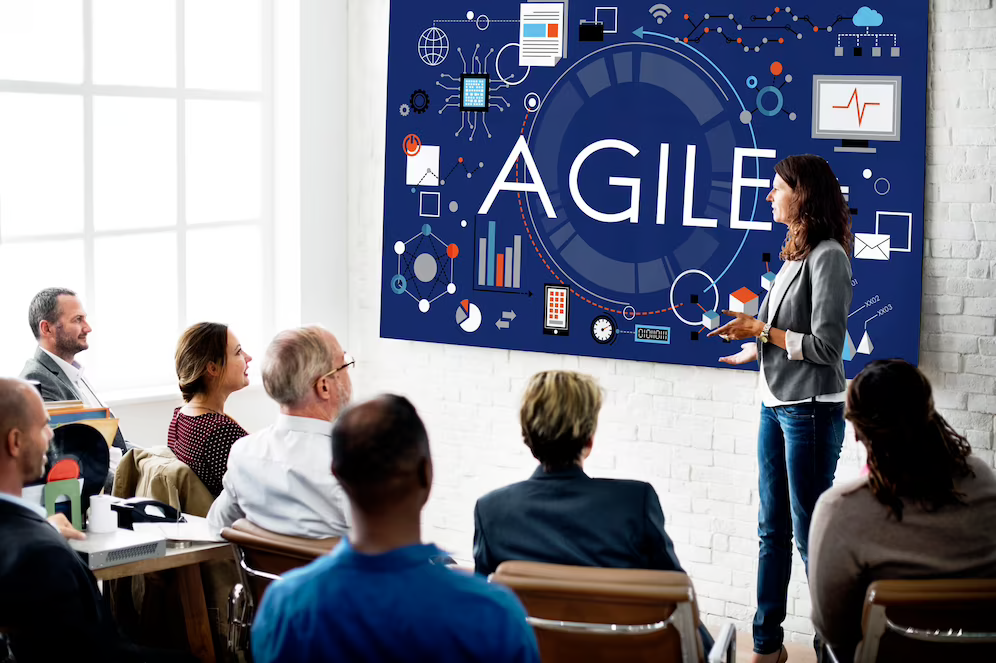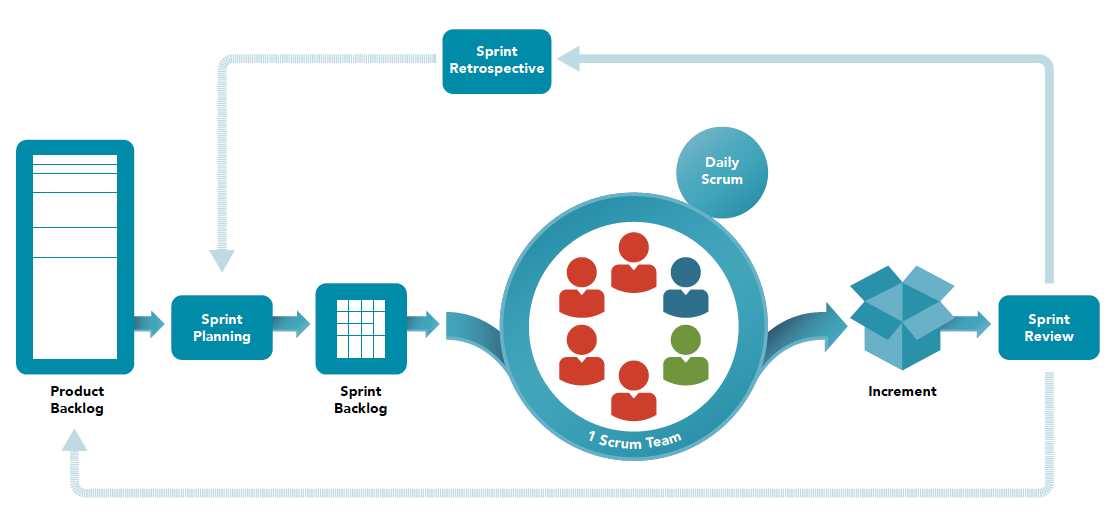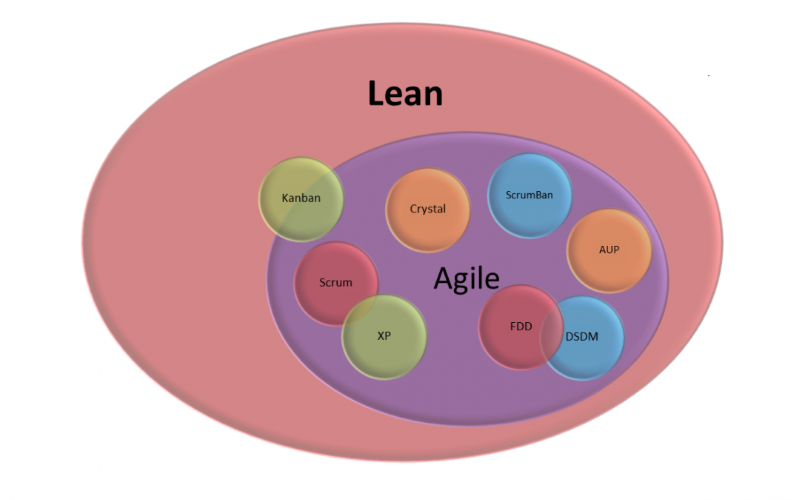Learn the Difference Between Agile and Scrum [2025]
Know the Difference [2025] Design, development, deployment, and testing are the essential stages of any software development challenge course. Wondering how these stages are executed thoughtfully and effectively?
Correct, it is better to hear about challenge management methodologies - Agile and Scrum, if you have been in the software growth area for some time.
Rightly so, at this moment, organizations are adopting green challenge management software programs and strategies, Agile and Scrum are the buzzwords. These methods have confirmed the ideas to ensure that the challenge growth stages are adopted effectively and on schedule, as intended.
Do you also use Agile and Scrum interchangeably and haven't discovered their key differences yet? The purpose of this article is to throw some light on Agile vs Scrum and learn how each methodology works.
What is Agile methodology?

Agile methodology is a consistent, iterative approach to product improvements through consistent collaboration across the group as well as stakeholders. The above image reveals two key phrases associated with the agile methodology.
The creation section in any agile framework is the micro-growth section of the product.
We call this method iterative. As a result, the work to be completed within a certain time frame is broken down into smaller parts that are assigned to group members, and then progress is periodically reviewed based on constant suggestions for making fundamental changes. All of this work done in parallel is combined to form a complete product.
Finally, the product is deployed to see improvements and work within the precision manufacturing environment. After profitable deployment, the operations group continually ensures that the deployed product works smoothly.
elegant statement ideas

Let's take a look at the basic ideas that any Agile framework applies.
- The Agile Manifesto states that “ people and interactions across processes and tools ” means that interacting with people throughout the event cycle is essential rather than relying solely on tools and machines.
- The Agile principle of “ working software over complete documentation ” emphasizes the importance of straightforward, maintainable documentation while maintaining first-hand the value of delivering.
- “ Buyer Collaboration on Contract Negotiation ” reveals the ability of Agile groups to adapt to buyer and consumer needs.
- Another core principle of Agile methodology is “ respond to change rather than follow a plan .” This reveals that Agile is an iterative method with constant improvements mostly based on market needs.
Groups that use these lean methodology indicators can create products that are correct, environmentally friendly, and meaningful, because the challenge will be constantly improved based on shoppers' suggestions.
Finally, Agile teams adhere to their disciplined ideas to ensure continuous improvement, customer satisfaction, and complete initiatives on time and in the internal boxes; the list is long.
What is Scrum Framework?
Scrum is , without a doubt, one of the modern challenge management frameworks that draws on Agile ideas to develop and ship initiatives effectively. Groups in many companies, tech startups or large enterprises adhere to Scrum values, ideas and practices to work on iterative goals.
You can think of it as a way to work as a group to charge smaller elements of the challenge in each dash. However, what is a dash here?
Groups that follow the Scrum framework set goals to be completed within a time frame known as a sprint. Although the Scrum methodology does not call for any specific sprint period, it typically lasts for two to four weeks.

Take a look at the image above; you may see completely different roles, formations, and occasions that the Scrum methodology follows.
Roles: In the Scrum methodology, the Product Owner understands the organization's imperatives and market demands to prioritize product backlog improvements, ensures that the Scrum guidelines are fully adopted by the group members, and forms a "growth group" of performers with technical talent assigned to product development.
Artifacts: The “Product backlog” is an inventory of the tasks that must be completed to create the ultimate product, while the “Dash backlog” identifies the plans and manageable deliverables for a given dash. Thus, the dash backlog is a subset of the product backlog. The “increment” in Scrum artifacts is the sum of all completed dashes.
Occasions: Dash Planning - Product Owner and group identify which Product Backlog objects should be included in a dash, Daily Scrum - a kind of daily backup gathering to check progress, Dash Evaluation - presenting the increment to stakeholders and shoppers, Dash Retrospective - after a dash overview, the group looks for areas for improvement and productivity enhancement.
Scrum ideas

- Experimental Cycle of Management - Scrum implements the experimental cycle that is based on the concepts of transparency, inspection, and adaptation. These pillars allow group members to work based mostly on information and experience.
- Self-organizing groups - Give groups the autonomy to come up with green business ideas to achieve goals faster.
- Iterative Method - Scrum methodology is open to suggestions and has the ability to respond to changing needs.
- Collaboration - Key indicators of smooth collaboration are awareness, expression, and appropriation.
- Value-Based Prioritization - Scrum ensures that its processes are environmentally friendly in delivering the most value to the organization in every sprint.
- Time-bound events - A specific period of time is allocated to research any type of functionality in the Scrum methodology. These short time periods ensure that the challenge is fully developed in the allotted time.
How is Scrum a subset of Agile methodology?
It is not a shock to confuse Agile and Scrum, as they share similar core values. However, they may seem related, Scrum is a subset of Agile, meaning that Scrum is an Agile methodology, while Agile may or may not be Scrum as a result of different Agile frameworks such as XP or Kanban.

Scrum is a reasonable method under the Agile umbrella. Agile is a broader philosophy that Scrum applies to almost all green team management.
Put simply; you might imagine Agile as a laptop model like a Mac while Scrum is a model of it, like a MacBook Professional or Air.
Scrum prides itself on its proven ideas, roles, and artifacts for the effective implementation of Agile philosophies.
Agile methodology focuses on fostering adaptability, collaboration, and flexibility in groups, and the Scrum framework provides a structured way to bring these ideas to life. That's why Scrum is a subset of Agile.
All Agile and Scrum methodologies put the customer first. They imagine the customer to be relevant at all times, so these methodologies respond quickly to suggestions and make essential improvements.
Agile encourages breaking down work into time-packed buckets so that the group is more likely to be responsible for delivering the assignments. Scrum, following the same idea, launched sprints to further enhance group accountability.
Sprints in Scrum help you deal with time, planning is higher, and you don't want to replace your entire product too soon; instead, you can simply improve the output of a particular sprint, making for faster product growth.
Agile vs Scrum: Key Differences
| Agile methodology | Scrum methodology | |
| identification | Scrum is a precise and structured framework for following the core values of Agile. | Scrum is a proprietary framework built on the basis of Agile ideas. |
| Domain | Agile methodology is versatile in adapting to many roles and group styles. | Examples of frameworks that align with Agile methodology are Scrum, Kanban, Lean, XP, etc. |
| Examples | Follows iterative and incremental methods of shipping the product regularly to get suggestions. | Scrum is a widely adopted method under the Agile methodology. |
| road | Improvements are mostly based on product backlogs and rush goals. | Delivers incremental build after each burst. |
| Subgroup | Agile will not always be Scrum. | Scrum is agile at all times. |
| Flexibility | The Agile Manifesto identifies common and versatile ideas to suit completely different product growth needs. | Scrum defines roles, artifacts, events, and special celebrations for product management. |
| Roles | Collaborate across the group as well as multiple cross-functional groups. | Product Owner, Scrum Understanding and Growth Group are essential roles in the Scrum methodology. |
| In response to change | Puts the customer first, quick responses to buyer's opinions and suggestions. | Collaborate across the group as well as many useful groups. |
| administration | Management is essential in the Agile methodology. | The Scrum framework encourages self-organizing groups. |
| Cooperation | Scrum defines some artifacts such as product backlog, dash backlog, and increments to track progress. | Daily stand-up conferences for collaboration across the group. |
| Archaeology | In Agile methodology, groups are free to define their own artifacts to consider in the progress of product growth. | Scrum defines some artifacts such as product backlog, dash backlog, and increments to track progress. |
While the agile methodology has gained a vibrant reputation over the past decade, Scrum has evolved into one of several widely adopted Agile frameworks. In numbers, about 70% of US companies use an agile methodology for product management.
Furthermore, the Agile methodology has a much higher common success cost of 88% compared to various product management strategies.
Although various frameworks align with the Agile methodology, Scrum is the most preferred, chosen by 66% of Agile users.
How are Scrum and Agile groups environmentally friendly?

Iterative approach: Traditional challenge management strategies just like the waterfall model conform to a sequential approach of transitioning to the next section (design, develop, review, deploy) only after the current section is finished, however, Agile philosophy and Scrum framework follow iterative and incremental approaches to promote collaboration, flexibility and adaptability.
Scrum Sprints: In these methodologies, you break down work into smaller, manageable items that can be delivered in each sprint. Then, based on the product and backlog sprints, you can effectively plan sprint goals and ship them quickly.
Constant Collaboration: Agile methodology is primarily designed to achieve constant and smooth collaboration with shoppers, stakeholders, internal groups, and between numerous groups.
Continuous engagement of shoppers and groups throughout the event's permit period allows you to regularly replace required modifications based on consumer or consumer suggestions, enhance buyer satisfaction, reduce the need for rework, and result in faster availability of the specified product.
Adaptability: Agile and Scrum methodologies prioritize delivering value quickly. The ideas included here are versatile, so you can adapt and adjust deliverables based on customer needs even in the midst of a challenge.
Is Scrum just a type of Agile?
Certainly, Scrum is a specific framework for the Agile methodology.
Agile is a modeling philosophy with common guiding principles and indicators that can be implemented through various challenge management frameworks. Its ideas will be tailored to fit the many needs of many groups and organizations.
It is safe to say that Scrum is at all times Agile because it is fundamentally built on Agile ideas.
In this article, we have tried our best to refresh the differences between Agile and Scrum for you. In addition, we have demonstrated these methodologies individually and how they work. So, if you are working in a product role or part of a group working on Agile, this text allows you to understand more about the Challenge Management Cycle and its frameworks, enhancing your productivity in delivering the product.
You can also discover some good study resources for Agile certification. Yes

![Learn the Difference Between Agile and Scrum [2023] Learn the Difference Between Agile and Scrum [2023]](https://blogger.googleusercontent.com/img/a/AVvXsEiqmYZ80Wo-dBEVOaL_QfJoqw3IBu_x-tCWqNHuTGNPBARzC5VMoDVW7Db-o29vSzTF36LgUnrDfsaMMcxLJQThJ17RUDQY8bi4uC8ooaTa1DxwThw14_Y6PGScaOoQxkuZ_zAP-TwTM0KS0sQAWXmtzGK_WBgFHNHWra0K6ngxTfBRacLr25xsWd00vlM=w320-h213-rw)